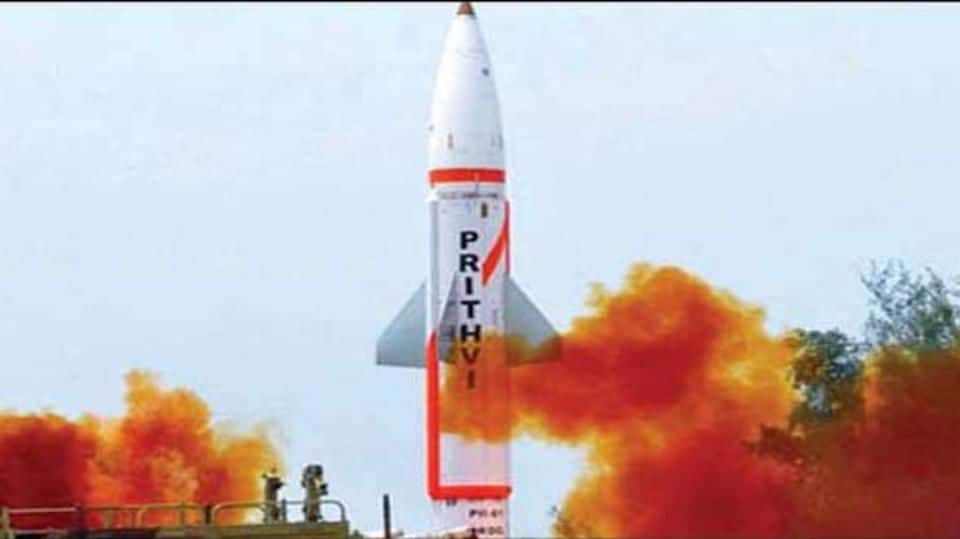
#DefenseDiaries: Prithvi is India's first 'Made-in-India' and 'Made-by-India' ballistic missile
What's the story
The debate continues to rage on the need for greater indigenization of India's military arsenal. However, there's one area where India can proudly boast of attaining indigenous mastery - ballistic missile technology. In 1983, India launched its missile programme which gave birth to the Prithvi, the first of a series of three 'Made-in-India' and 'Made-by-India' nuclear-capable ballistic missiles. Here's all about the Prithvi missile.
History
Development of the Prithvi-I
In 1983, India launched the Integrated Guided Missile Development Programme (IGMDP) to indigenously research and develop a wide variety of missiles. The programme, overseen by the Defence Research and Development Organisation (DRDO), proceeded under the leadership of former President APJ Abdul Kalam. In 1988, India test-fired its first homemade ballistic missile, the Prithvi-I. Since then, India has developed three versions of the Prithvi.
Prithvi-I
Prithvi-I can target Islamabad
The Prithvi-I is a single-stage, liquid-fuelled short-range ballistic missile (SRBM) with a range of 150-km. The road-mobile nuclear-capable missile was commissioned into the Indian Army in 1994 and is capable of targeting around a quarter of Pakistan's territory, including capital Islamabad. In 2013, the DRDO said it was planning to withdraw the Prithvi to replace it with the latest and more accurate Prahaar missile.
Prithvi-II
Prithvi-II has longer range, is more accurate
In 1996, India tested the Prithvi-II missile which has a higher 250-km range but lesser 500-650kg payload compared to the Prithvi-I. The Prithvi-II comes with an improved inertial navigation system, greatly improving its accuracy and allowing it to evade anti-ballistic missiles. The missile is in service with the Indian Air Force and is capable of targeting all major Pakistani cities and military installations.
Prithvi-III
Prithvi-III can be launched off Indian Navy ships
The Prithvi-III, also called Dhanush, is a ship-based naval variant of the missile that began development in 2000. It's a two-stage, solid-fuelled missile with a range of 350-km when equipped with a 1,000kg payload. Its range increases to 600-km when equipped with a 500kg payload. It can be used against land-based targets and enemy warship fleets.
Explained
Even with conventional weapons, Prithvi series missiles can cause havoc
The short-range Prithvi series ballistic missiles are primarily Pakistan-specific. They may not be used for striking strategic targets but their mobility and high accuracy make them a deadly battlefield weapon against enemy military formations and bases. A single conventionally-armed Prithvi missile can destroy what might take several smaller air-delivered bombs, cruise missiles, and artillery. The Prithvi-III can particularly be used to decimate enemy ports.
Lasting legacy
Humble Prithvi missile gave birth to India's mighty missile infrastructure
When first tested in 1988, the modest 150-km ranged Prithvi wasn't the most sophisticated ballistic missile. Its success lies in the fact that it spurred the creation of India's self-honed research and development infrastructure and industry that gave birth to India's sophisticated and longer-range Agni, K-series, BrahMos and Nirbhay ballistic and cruise missiles. Eventually, these formed the backbone of India's nuclear and conventional arsenal.